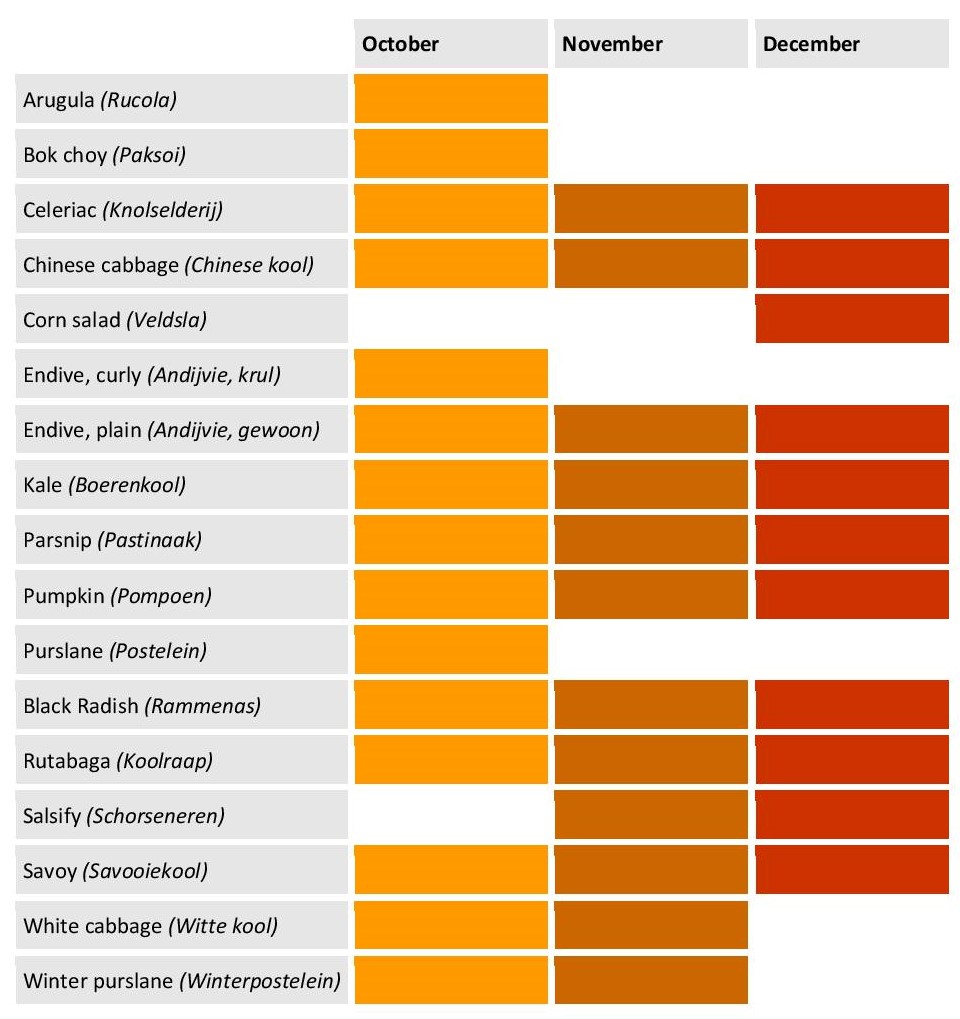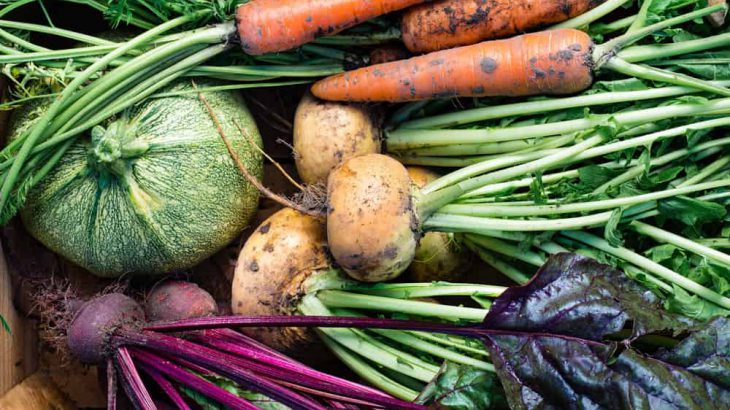Eating seasonal local food: Fall veggie guide ,,
One way to reduce the environmental impact of the food you eat is eating seasonal, because seasonally grown food takes less resources (be this energy for heating, pesticides or nutrients). Additionally, trying to eat seasonal food adds variety to our usual everyday diet, making the experience of cooking and eating more interesting for anyone who has to cook their own food, and eat above all. If this description includes you, then this guide is designed to help you navigate how to eat seasonal produce in the fall months: October, November, and December.
Global vs local seasonal food
Let’s start with a small clarification: the fruits and vegetables you eat will always be seasonal somewhere in the world – and the food in our supermarket shelves comes from many different countries. This adds some complication to the idea of seasonal eating. In October, for example, Paprika (Bell Pepper) is “seasonal” if it comes from Spain, where it grows in fields. Dutch Paprika, on the other hand, is not, as during the cold month it is grown in greenhouses, which means the growing process takes much more energy. This means that eating seasonal and eating locally can sometimes be at conflict, making the idea of sustainable eating complex. In order to bridge this gap in a clear and concise way, this blog will focus on local (so, Dutch, of course) seasonal food, in order to create a clear guide of what foods are seasonal in October-December in the Netherlands.
What’s in season? A month by month fall guide
The table on the right offers a handy visual summary of the dutch-origin vegetables that are in season in october, november, and december.
Year-round Dutch veggies
Some produce is always in season. These include:
- Potatoes (Aardappelen)
- Jerusalem artichoke (Aardpeer)
- Cauliflower (Bloemkool)
- Leeks (Prei)
- Radicchio (Radicchio)
- Radish, bunch (Radijs, bos)
- Radish, loose (Radijs, los)
- Daikon radish or chinese white radish (Rettich)
- Beetroot (Rode biet)
- Red cabbage (Rode kool)
- Oxheart cabbage (Spitskool)
- Brussel sprouts (Spruiten)
- Onion (Ui)
- Chicory (Witlof)
- Carrots (Wortelen)

Seasonal Recipes: the Student Cooking Corner Blog
As they have not been able to return to serve food on campus, the Green Office’s Student Cooking Corner is now going virtual. Check out the SCC blog for recipes or inspiration for your seasonal cooking. It is regularly updated with new recipes by the SCC team.
References
The information in the following article has been compiled using the GroenteGroente.nl website. For detailed monthly information on what produce is in season also from non-dutch origin, make sure to check out https://groentegroente.nl/seizoensgroenten/their website.
By: Maria Clara Oliani & Sarah van Kooten
